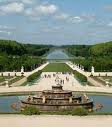The Baroque Period
The Baroque period (16th Century) was dynamic, dramatic, splendid, sensuous, turbulent and tempestuous. Deep shadows are in many paintings of this era. The church was becoming controversial with Martin Luther and the Protestants breaking from the Catholic church. The Inquisition was part of this period in art and world history.
The Renaisssance man believed the earth to be the center of the universe. Copernicus, the astronomer and philosopher revealed that the earth orbits the sun.
Michaelangelo Buonorotti was described as having "one foot in the Renaissance and the other in the Baroque period.".
Pieta carvings were everywhere. They are deep carvings in stone that are based on the principles of a balanced triangle.
Tomb of the Medici
Art is predominately used as propaganda for the reformation of the church.
New churches were built everywhere with brilliantly decorated interiors.
St Peter's in Rome
St Peters baldacchino (altar)
Leonardo DaVinci's Last Supper
This is typical of Baroque proportion in the high Renaissance where subjects were balanced to the head of Christ.
Spain was becoming more of a world power due to King Philip of Spain.
The Escorial palace and church.
The Spanish symbol of power and glory of Spain.
Diego Velasquez uses light and shadow for texture.
The Protestant Dutch from Holland painted land and ocean and vast skies. They were mostly merchants, shipbuilders and international buisnessmen. We see still lifes of fruit and flowers as subjects.
The Baroque period in France was ruled by Louis XIV. French Baroque glorified his person and position.
The Gardens at Versailles
The Baroque period art is filled with violence and spectacle. It is art of the senses, art of the feast, love of music and enjoyment of pleasures of the flesh.















